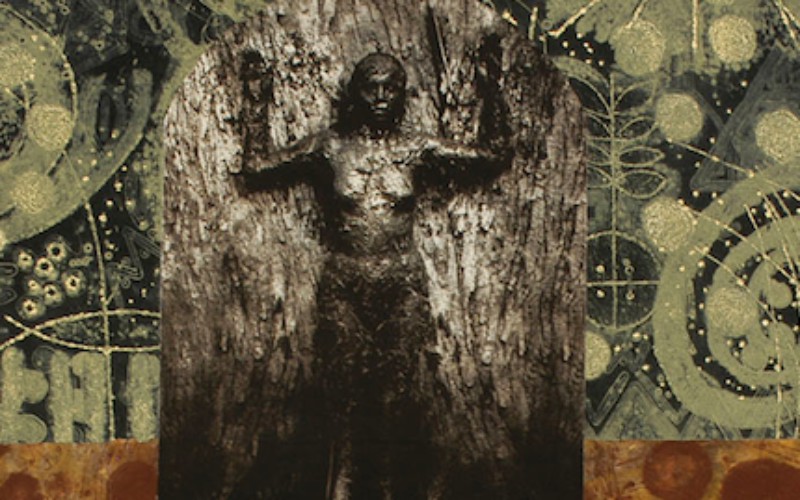Large-scale prints on display
JOCELYN MURPHY
jmurphy@nwadg.com
“Printmaking is pretty straightforward and simple,” Maryanne Ellison Simmons explains. “You ink something up, you lay something on top of it, and you run it through a press. Some processes are more complicated than others, and we have divided those processes up into lithography, etching, engraving, woodcut, relief. We do all of that — and none of that. There are really finely trained printers who do really specific, beautiful work. We’re not those people.”
Simmons is a publisher and Master Printer and founded her St. Louis studio Wildwood Press in 1996. Though the process may be “straightforward,” nothing about the works that emerge from Simmons’ studio would indicate a simplicity of design or imagination. St. Louis itself is known for the large presses that are built there, and Wildwood inspires artists to rise to the challenge of working on an immense scale. With etching beds 5-feet by 10-feet, and specializing in handmade paper, the works that come out of Wildwood are often one-of-a-kind and always extraordinary.
“We really do encourage people to do two things: meet the challenge of the big press, but also think of print not as a secondary part of their art practice,” Simmons reveals. “What we like to tell people is we want you to make prints that are as important as your primary work. Scale enables that to happen for painters and sculptors and installation artists.”
Part of what makes Simmons’ process so distinct is how deeply she digs into each project. The studio will only produce two or three projects a year — which could be any number of individual pieces. During a recent phone call with What’s Up!, Simmons noted just the week before she had done 44 unique prints for artist Michele Oka Doner. But she also had in her line of sight a piece by another artist that took five years to complete.
When artists come to Wildwood Press, they’re not typically working on a single piece, they’re constructing a body of work. Sometimes it takes Simmons a year, or two or three, to understand the essence of the artist’s work and how the press can facilitate that work.
“One of the things I’m emphatic about is that every body of work we do has the voice of the artist, not of the press,” she says. “And I like my artists to all look individual. There are some presses whose work is quite beautiful, but you can tell that work has been done at that press. So we don’t ask artists to fit into our format. I like to think it was a true collaboration where we teach each other something.
“The great thing is that when you’re standing in front of an image that’s that big, you really get a sense of your own size and this figure’s size,” Simmons adds. “Most people think of a print as a very intimate, very small thing. I love those, but when you have a big press, you make big work.”
__
FAQ
‘On Paper: Collaborations in Print and Pulp From Wildwood Press’
WHEN — Through May 4; gallery hours are noon-2 p.m. weekdays and one hour prior to most performances
WHERE — Joy Pratt Markham Gallery inside the Walton Arts Center, Fayetteville
COST — Free
INFO — 443-5600, waltonartscenter.org



